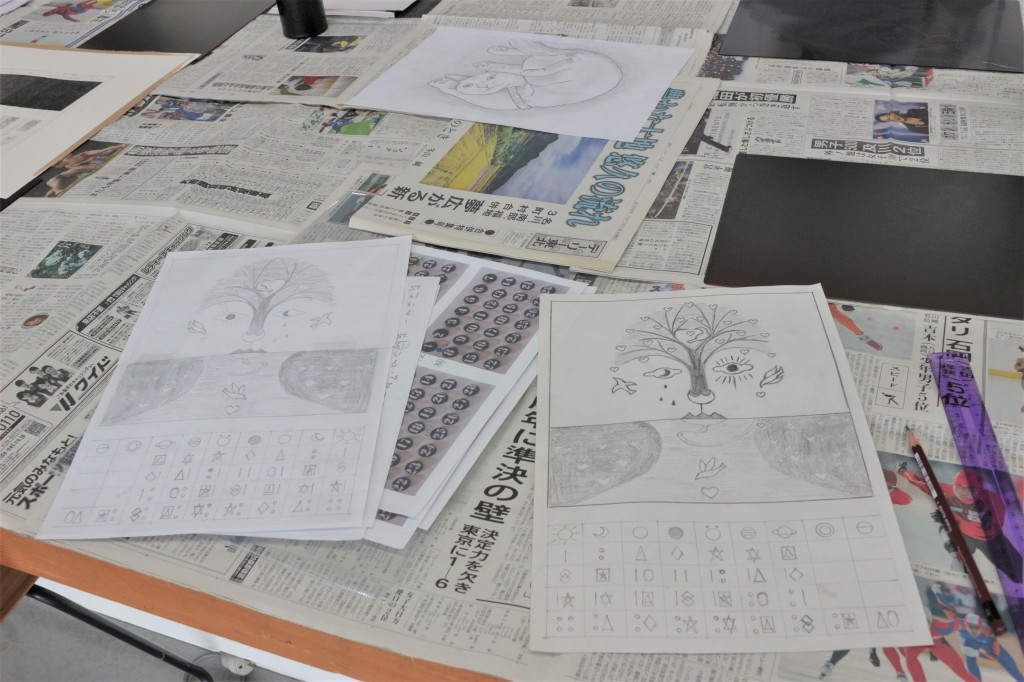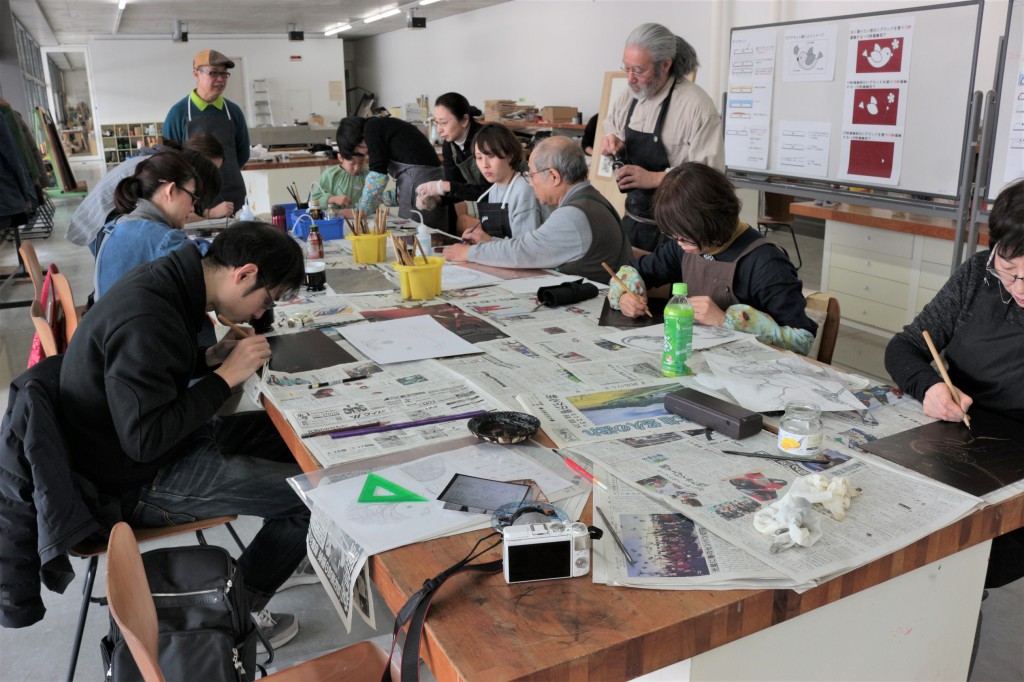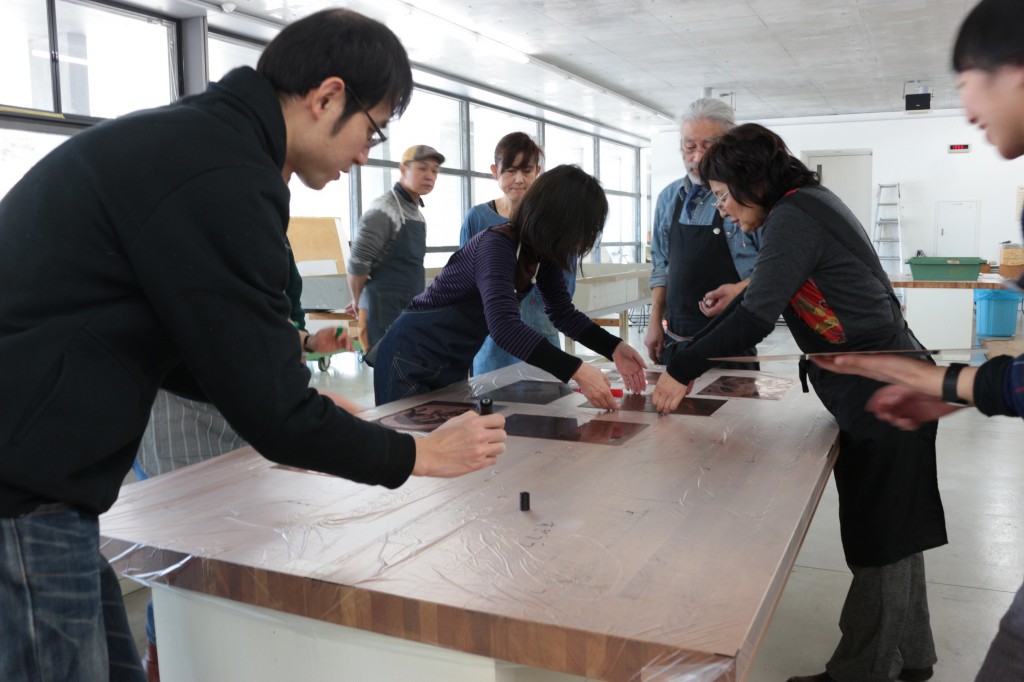
Printing Workshop ”Aquatint’s aesthetics of tones and harmony”
2019.3.27.水曜日
In the beginning of March, we held a printing workshop “Aquatint’s aesthetics of tones and harmony”.
The instructors are URUSHIDO Mieko, who expresses delicate lines and shapes with the technique of corroded copperplate printing, and HASHIMOTO Naotsugu, who produces a copperplate print made by drypoint technique using aluminum plates and exhibits both within and outside Japan.
On the first day of the two-day course, we corroded the copper plate.
First of all, Urushido explained about the production method and that there are different techniques for expressing the lines and faces of the etching copper plate.
She explained a technique called etching using a line drawn with a needle etc. and a technique called aquatint to express the surface using powder of resin.
By applying a preservative called ground to portions that are not to be corroded and repeating soaking in a corrosive liquid, the intensity of the lines and the color gradation of the surface are represented.
As the corrosion time is long and deep, printed lines will be strong, and the surface color will be printed dark.
The participants were asked beforehand to draw a sketch on the theme of a fictional calendar.
The calendar contains pictures and numbers representing the season, and letters indicating the month and day of the week.
Based on seasons with feelings and their birth month, they were interesting drawings with free ideas combining figures and letters.
In the etching process, coat an anti-corrosion agent called ground on the surface of the copper plate and dried, transfer the sketch, and trace it by the needle.
After drawing a line to remove the ground with the needle, soak in corrosive liquid.
Furthermore, leaving the part that strengthens the line, repeating the gradual application of ground and corrosion brings out the strength of the line.
In Aquatint, after winding up the powder of resin in a box and spreading it evenly on a copper plate, heat is applied to fix the powder. Then, like the etching, adjust the application of the ground and the corrosion to make the gradation.
This time, etching was applied for 10 minutes and etching was applied for 20 seconds.
During productions, a special cafe by the staff became a place of relaxation.
The second day we did printing.
After setting the plate mark, put the plate on the electric warmer and put the ink on it so that the ink does not harden.
Wipe off the ink and print with paper dampened with water.
In the copperplate printing studio, there is a large press that is said to be the largest in Japan.Professional techniques such as preparation of paper, adjustment of pressure of press, condition of printing, etc. are essential to use this press.
This time, we were able to print using this press under the guidance of Hashimoto, who had been involved in the copper printing workshop when the press was installed.
In an attempt to create a large calendar representing fictional years by printing each edition all at once.
A few people slowly put paper and felt in order, and move the electric roller while watching the state of the felt.
We changed the condition of the ink and the arrangement of the plates, and printed two prints of about 2 m width.
At last, we had a review session.
Although it was a difficult theme, it seemed that the individuality was greatly expressed by each way of understanding. Even though the first techniques of corrosion and printing did not go as expected, some participants found the casual image interesting.
Line drawing, fixing of resin, corrosion, ink filling, wiping off, condition of paper, printing.
We may have been able to experience the attractiveness and profundity of making different drawings with many elements.
Some participants continued printing after the course was over.
It seemed that they were able to concentrate on production while having fun!
Thankful to the two instructors who gave us guidance kindly until the end.
Prints will be displayed in the corridor next to the copperplate print studio.
They can be also seen from the window.










































